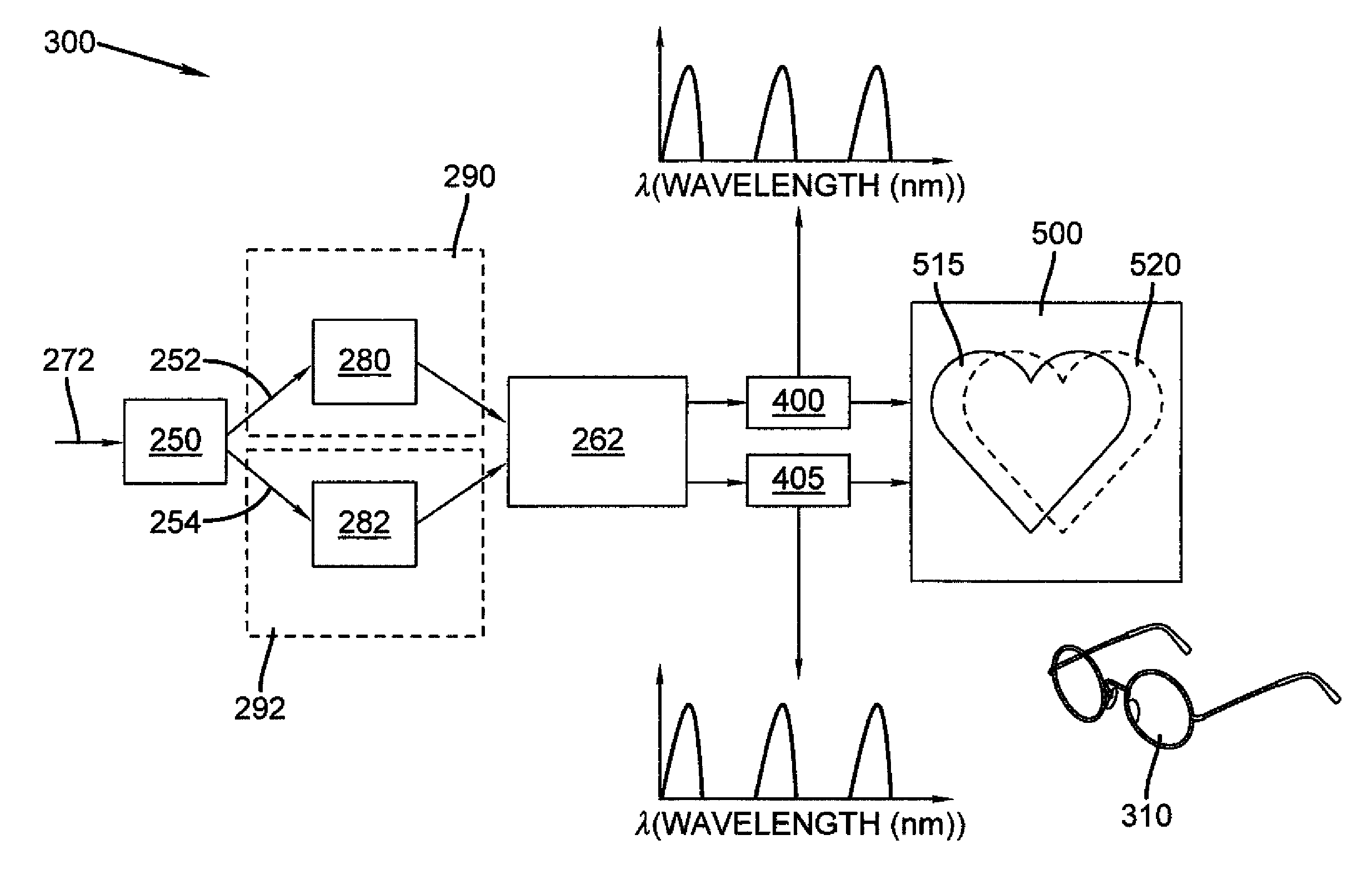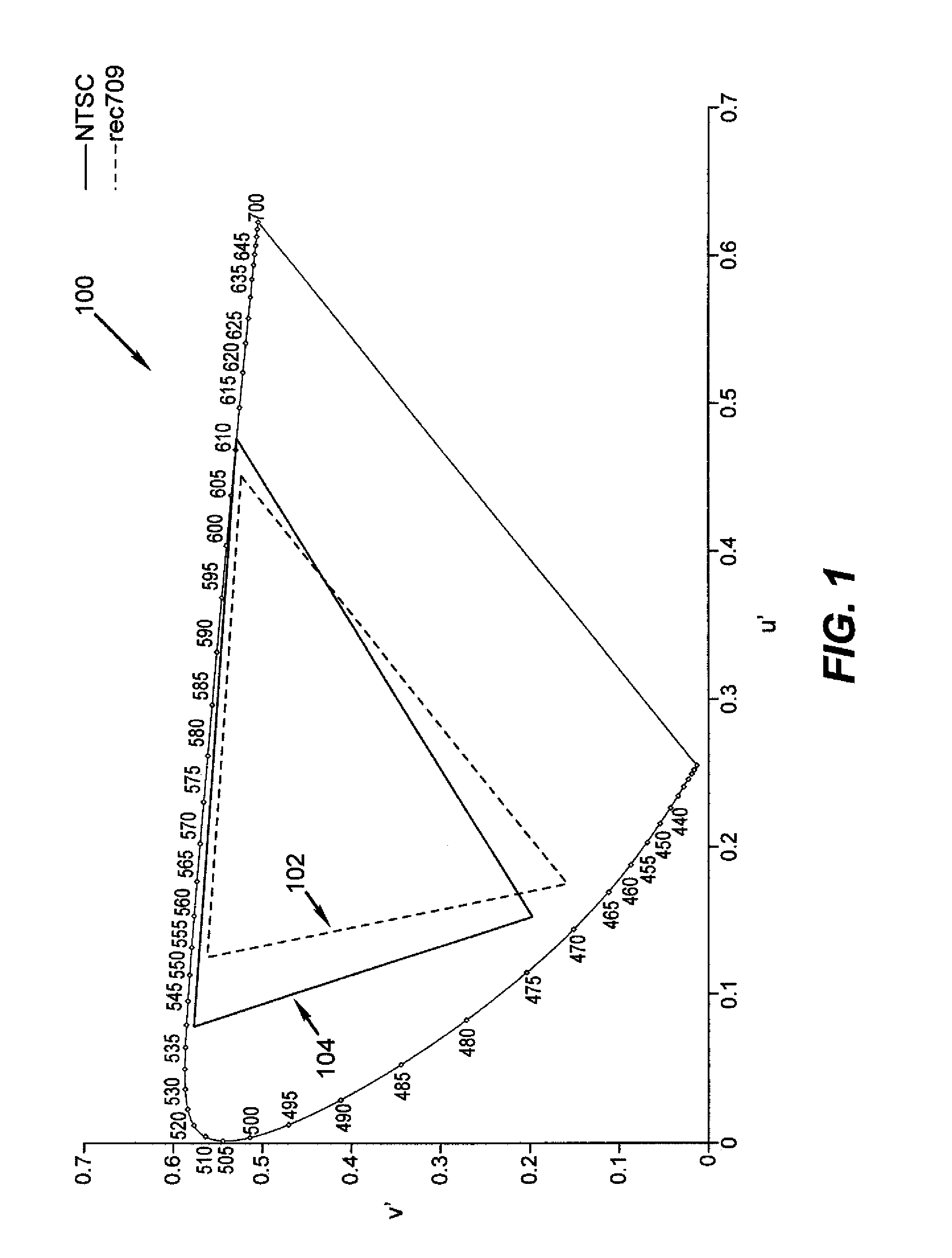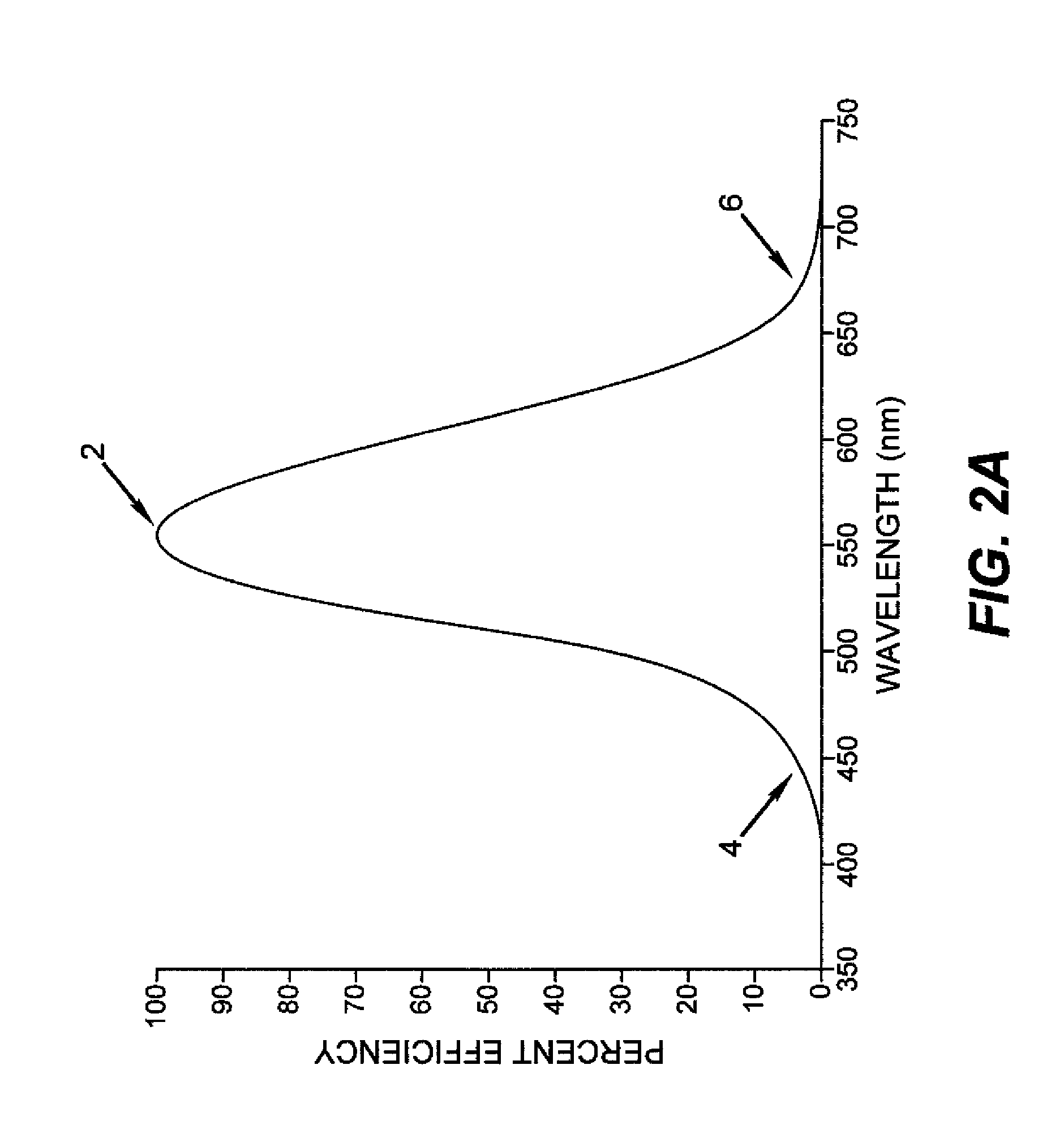2D/3D switchable color display apparatus with narrow band emitters
a color display and switchable technology, applied in the field of display devices, can solve the problems of no commercially available 3d display for use in the home, dedicated 3d display, complex approaches, etc., and achieve the effect of enhanced color gamut and high color gamu
- Summary
- Abstract
- Description
- Claims
- Application Information
AI Technical Summary
Benefits of technology
Problems solved by technology
Method used
Image
Examples
Embodiment Construction
[0044]The present description is directed in particular to elements forming part of, or cooperating more directly with, apparatus in accordance with the invention. It is to be understood that elements not specifically shown or described may take various forms well known to those skilled in the art.
[0045]As discussed above, there is a need to have a low cost 2D / 3D switchable display for consumer use to expand the potential market for 3D content. In order to achieve this goal, it is important to have a high efficiency system, leading to a lower power display. There are many types of display technology that can be used to create the display system of the present invention, however, all of the inventive systems utilize narrow band emitters that define six primaries of the 2D display. Preferably, the emitters are not filtered in 2D display mode. Examples of potentially useful display technologies for 2D / 3D switchable displays include rear and front projection displays with either spatial...
PUM
 Login to View More
Login to View More Abstract
Description
Claims
Application Information
 Login to View More
Login to View More - R&D
- Intellectual Property
- Life Sciences
- Materials
- Tech Scout
- Unparalleled Data Quality
- Higher Quality Content
- 60% Fewer Hallucinations
Browse by: Latest US Patents, China's latest patents, Technical Efficacy Thesaurus, Application Domain, Technology Topic, Popular Technical Reports.
© 2025 PatSnap. All rights reserved.Legal|Privacy policy|Modern Slavery Act Transparency Statement|Sitemap|About US| Contact US: help@patsnap.com



